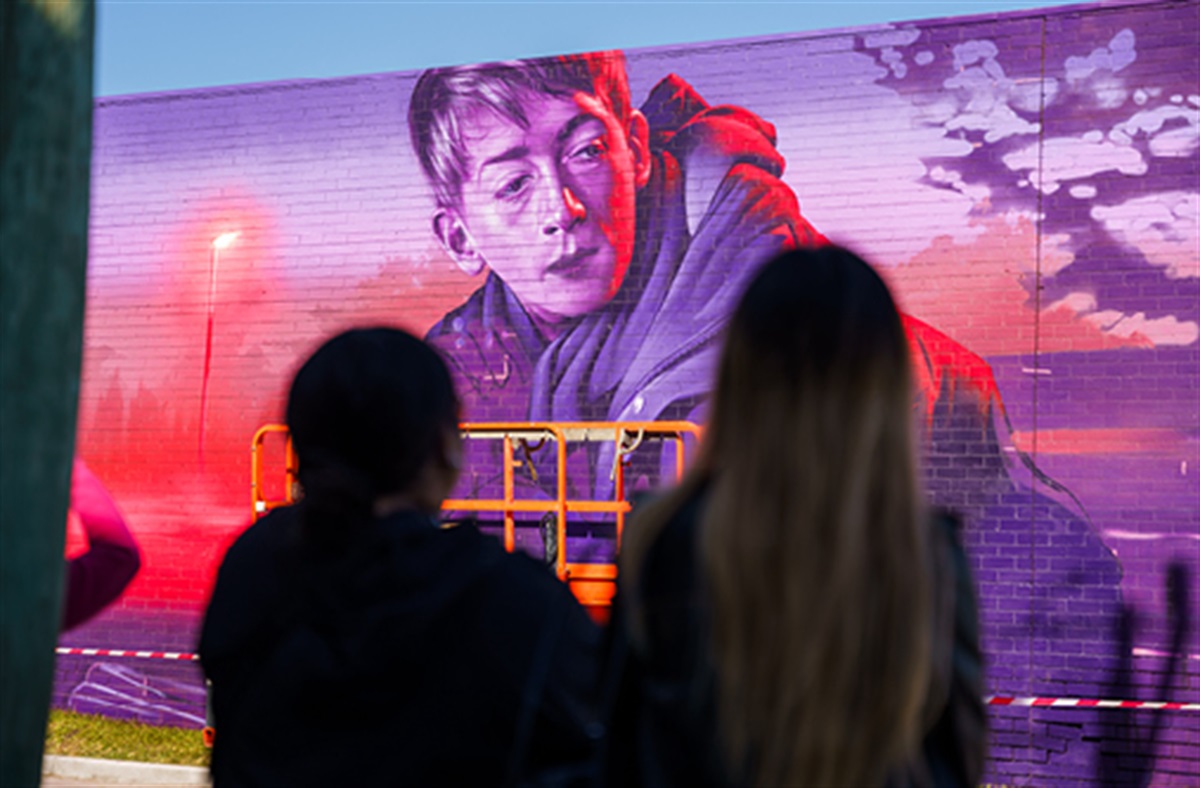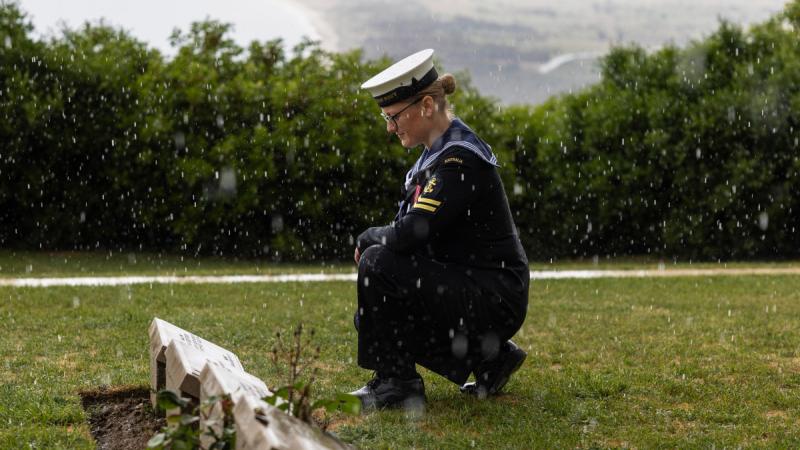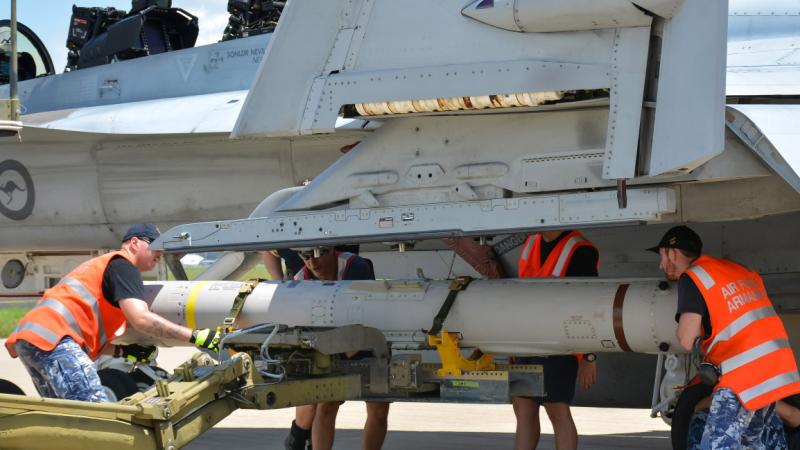A third-year physics student at The University of Western Australia who grew up fascinated by sci-fi space movies had his own galactic adventure tracking ‘near earth’ asteroids through the cosmos as part of a three-week internship at the University of Arizona in the United States.
Ben Linsten, from Wembley, joined a team at UArizona’s Lunar and Planetary Laboratory where he helped monitor space for asteroids hurtling past Earth using NASA’s sophisticated remote Infrared Telescope Facility, located on the summit of Mauna Kea in Hawaii.
The facility is equipped with cutting-edge infrared instruments, including spectrometers and cameras, enabling scientists to conduct detailed studies of ancient space rubble and is powerful enough to see features on Mars.
“There were some surreal moments and it was such an incredible experience – we were doing night shift sitting in the lobby of an Arizona Hotel on computers while we were at a major conference Asteroids, Comets and Meteors 2023, remotely operating the telescope in Hawaii,” Ben said.
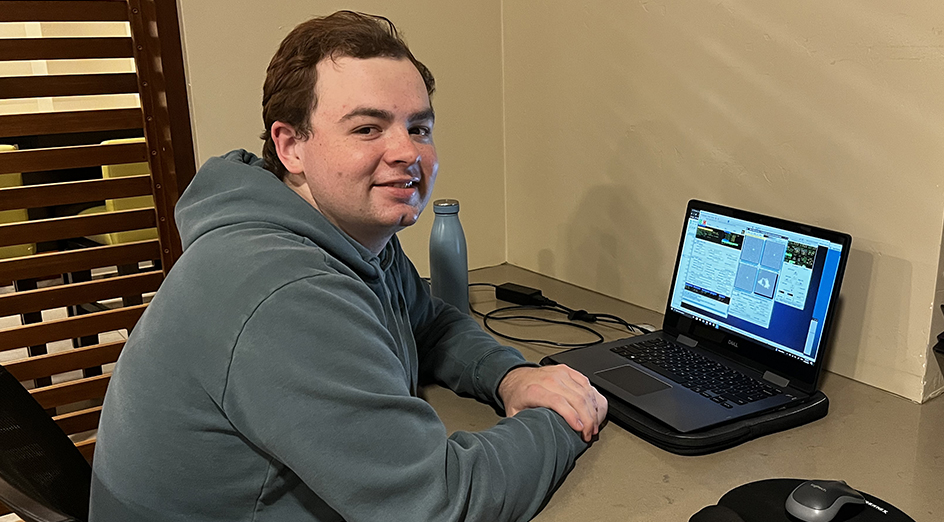
Image: It may look like a ‘normal student at laptop’ shot but shot shows Ben Linsten remotely monitoring space for asteroids via using NASA’s sophisticated remote Infrared Telescope Facility in Hawaii, while at a space conference in Arizona.
“We observed four asteroids over that time and it was surprising how much we could learn just by looking at them and watching them go past the earth – we could see one was made up mostly of silicates and carbon which we were later able to confirm with our huge datasets back in the lab in Tuscon.”
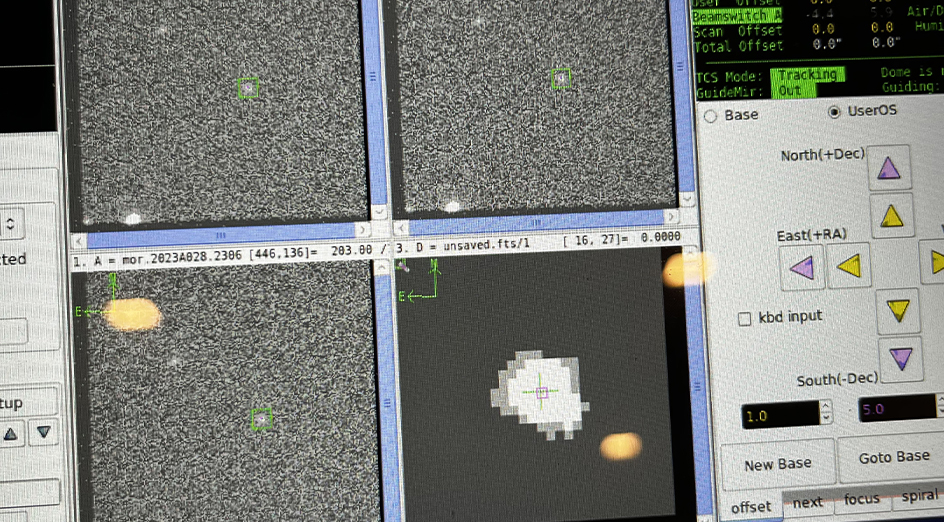
Image: A close-up of the asteroid being tracked from the hotel lobby.
Ben, who is undertaking Bachelor of Philosophy degree majoring in Frontier Physics, said taking a Planetary Defence module with Associate Professor David Coward, Chief Investigator at OzGrav and Science Director at the Zadko Telescope, was the catalyst for his overseas experience.
“David has been incredible in involving UWA and students in the course in the up-and-coming field of space situational awareness and took me under his wing when he could see how fascinated I was – introducing me to the Zadko Observatory and Telescope at Gingin as part of my coursework,” Ben said.
“A memorandum of understanding between UWA and the University of Arizona meant I was able to work under Professor Vishnu Reddy at UArizona’s Lunar and Planetary Laboratory as part of a host arrangement which was formed under the agreement.
“Professor Reddy’s work is focused on asteroids, meteors and meteorites in the solar system and ways to characterise these to help earth avoid any impending asteroid impacts in the future, like the one thought to have wiped out the dinosaurs around 66 million years ago.”
While overseas, Ben met with Kelly Fast, a scientist with the NASA Planetary Defense Coordination Office and part of the NASA team that tracks potentially hazardous asteroids and plans strategies to deal with them.
“All in all the whole three weeks was a brilliant experience and I’m very grateful to UWA and David and everyone involved for making it happen – I’m not quite too sure of what the future holds but I think there will be time back in the US for sure,” Ben said.
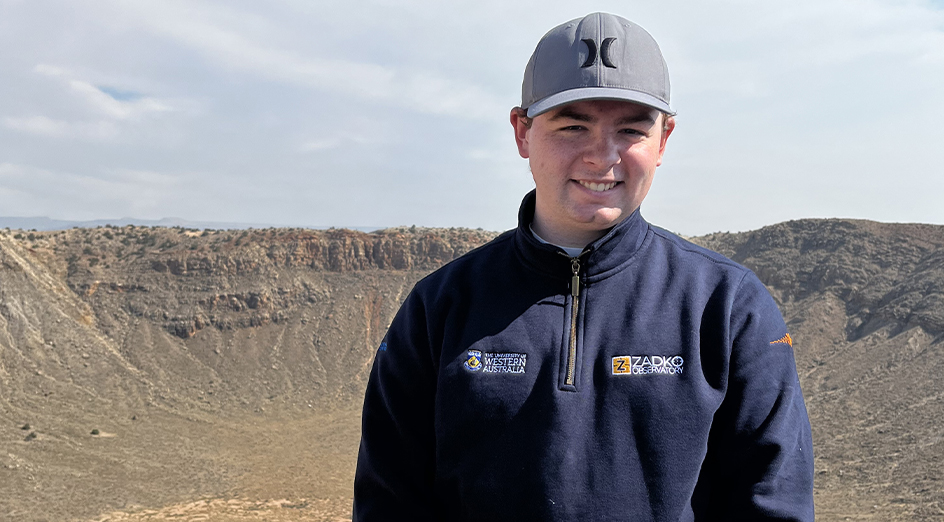
Image: What happens when space rocks do hurtle into earth… Ben at a meteor crater in Northern Arizona.



